Traditional Unity Ceremonies in Tulsa Oklahoma Weddings
Tulsa Wedding Venue Explains 19 Different Unity Ceremony Rituals
There are many ceremonies and memorable rituals that couples do at weddings to formalize that a man and a woman have become one. Bella Rosa Wedding Venue near Tulsa Oklahoma has witnessed several of these rituals.
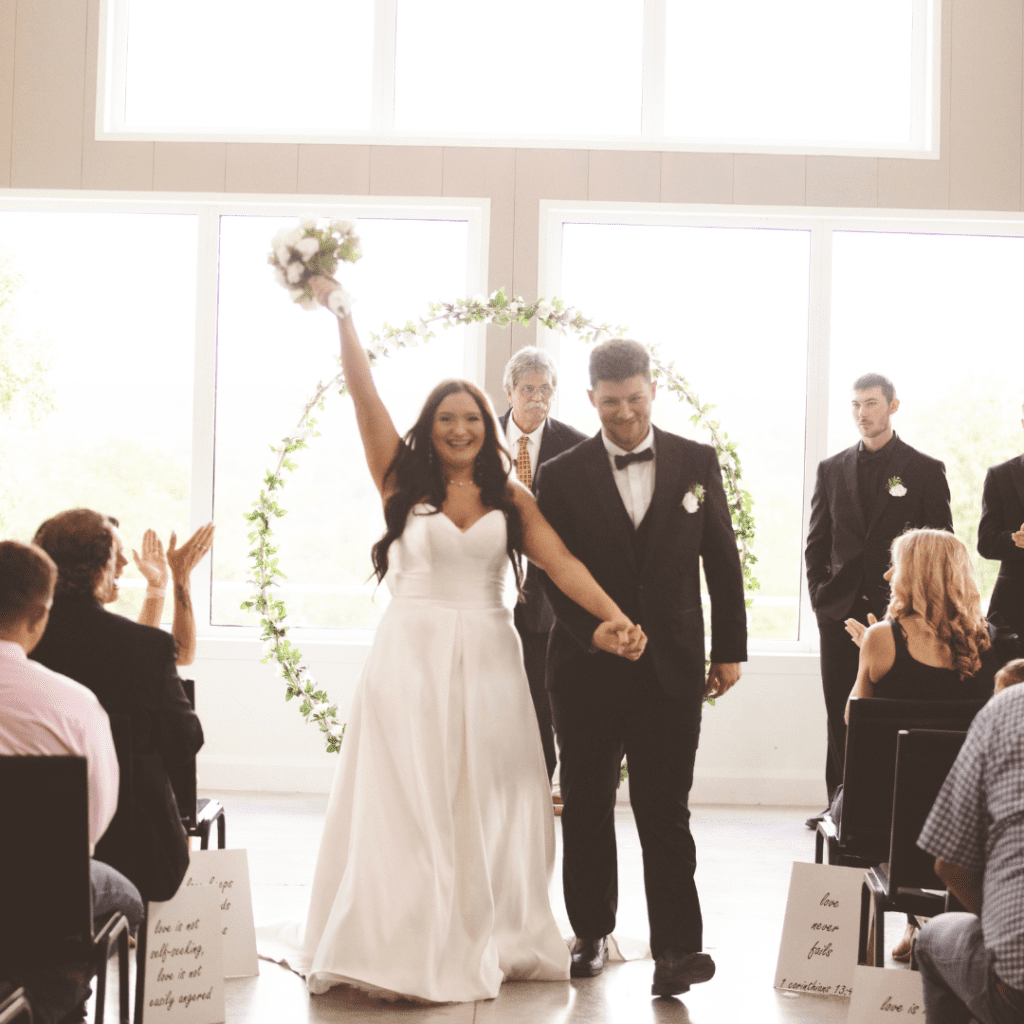
In most every wedding ceremony, there is a moment that symbolizes the unification of two individuals into one. This ritual that symbolizes 2 people have become one in spirit and body is rooted in the scripture in Mark 10:8 “And they twain shall be one flesh: so then they are no more twain, but one flesh.” This is often referred to as the unity ceremony and varies across different cultures and traditions, but its purpose remains consistent: to represent the merging of two lives, two families, and two souls. Whether through fire, water, sand, or other meaningful elements, the unity ceremony is a beautiful and serious reminder of the couple’s life long commitment to each other. This blog describes some of the most significant traditions that symbolize this sacred union.
The Unity Candle – The unity candle is the most common ceremony. The mother of the groom and the mother of the bride are escorted up the isle for the wedding ceremony carrying a lit taper candle. They each place their candle representing their child on either side of a larger candle. The candle in the middle remains unlit till the after the groom and bride have said their vows, then they walk over to the Unity candle, and each take their lit candle and together they light the middle one which is usually a bigger one. When the couple finishes lighting the middle candle, they blow the first one out symbolizing that they are no longer 2 but one bonded together in matrimony. The flame represents the love and light they will share in their married life. Most of the time this symbolic ritual is done while a special song is being sung or played. After the unity candle is lit, the couple goes back to the front center where the officiant introduces them as husband and wife and says, “I present to you Mr. and Mrs. __________________.
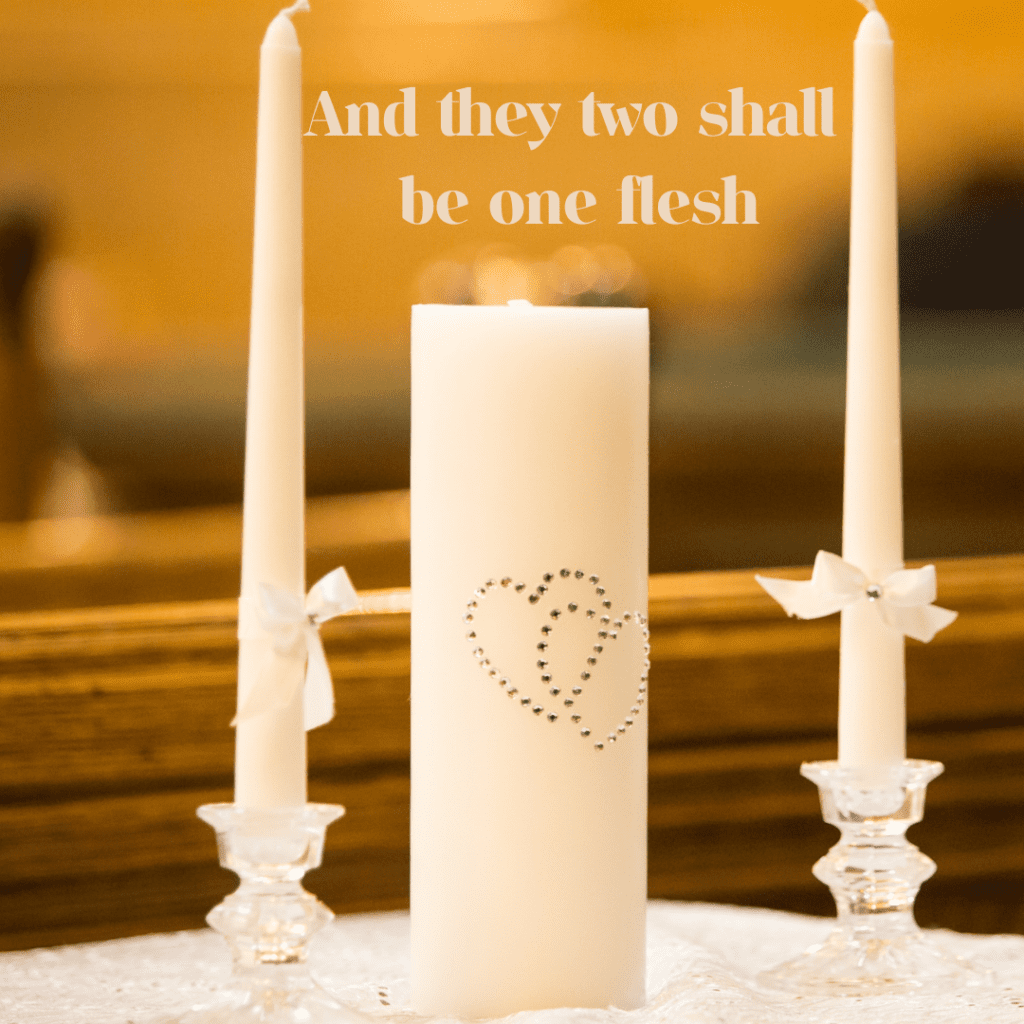
The Torch Ceremony – The torch ceremony is a common fire ritual in Hawaiian or Polynesian countries and among Pacific Islander traditions. It is a lot like the unity candle, but the torch ritual uses big torches that are so much bigger and brighter than candles. The flame represents light, knowledge, life, and the guiding spirit of ancestors. Usually someone they both look up to will light the first torch. This could symbolize ancestral wisdom at the start of the new journey. The torch then is used to light the second one symbolizing the passing on or igniting of unity, strength, and continuity—whether between families, generations, or communities. This ceremony is not only used at weddings but is often incorporated into Coming-of-Age Rituals and Tribal Gatherings – that strengthen community ties. The lit torches might be placed in a ceremonial holder, forming a circle of fire to represent unity, love, shared responsibility and eternal bonds. Many Polynesian cultures include chants, prayers, or hula/fire dances to celebrate the moment.
🌱 Tree Planting Ceremony – The tree planting ceremony is most practical because the couple plants a tree together in a big pretty pot during the wedding, symbolizing the beginning of their investment in each other’s growing love. As they care for the tree in their own home, they are reminded of the need to feed and water their spouse emotionally by showing them special respect and honor every day. Making investments into each other as one cares for the little tree will bring growth and more love into the marriage. Cherishing care that is given to each other will help their marriage to flourish. The officiant will say something like this, “May the care you give to this tree be a reminder to cheerfully invest something to show your spouse the attention and love you have to grow your marriage in trust, security, and love. This act symbolizes their growing love and the roots they are establishing together.
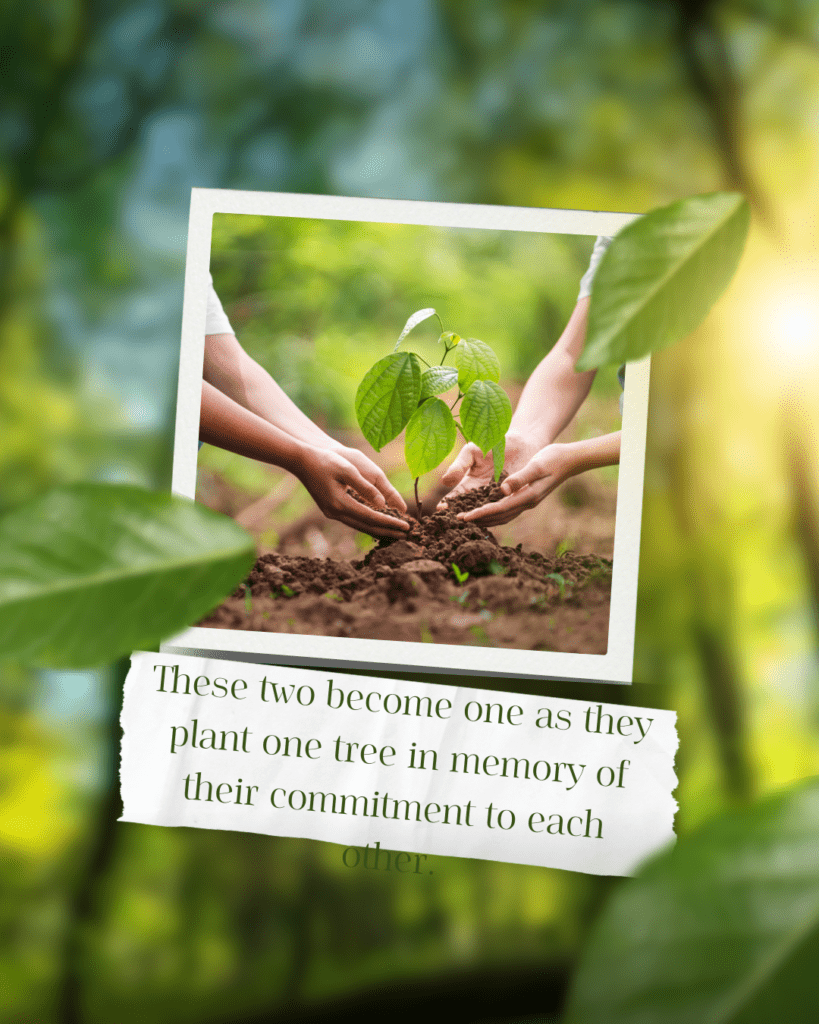
The Water Blending Ceremony – The Water Blending Ceremony is much the same as the wine blending ceremony: During the Water Blending ritual, the couple pours water from two different containers into a single vessel. This act represents their lives flowing together seamlessly and becoming one. The blended water can be kept as a memento or drank during the ceremony to symbolize the unity and endless journey of their union. The couple drinks from the same glass, symbolizing their commitment to share in all of life’s joys and challenges.
The Sand Ceremony – The Sand Ceremony is one of my favorites. This one is especially meaningful with blended families who have children. Here at Bella Rosa Venue our beautiful bride Tara with 2 children married a man with 3 children. At the ceremony the bride and groom poured the 2 first colors of sand into the beautiful glass vessel symbolizing the foundation and leadership of their home; then each of the children took a turn and poured their own color of sand into the vessel starting from the oldest to the youngest alternating between his children and hers. When they all finished it was a beautiful piece of art that they sealed. After the wedding is placed on their mantel for all to be reminded of the beauty of their own blended family. Each one has a part to play in the family. Each one has a special place and does their individual part to make the home flow smoothly. The family who works and plays together stays together. Each one of their lives, just as the colors are seen separately at first they blend beautifully with the others, making an inseparable piece of art, a unit of strength and beauty.
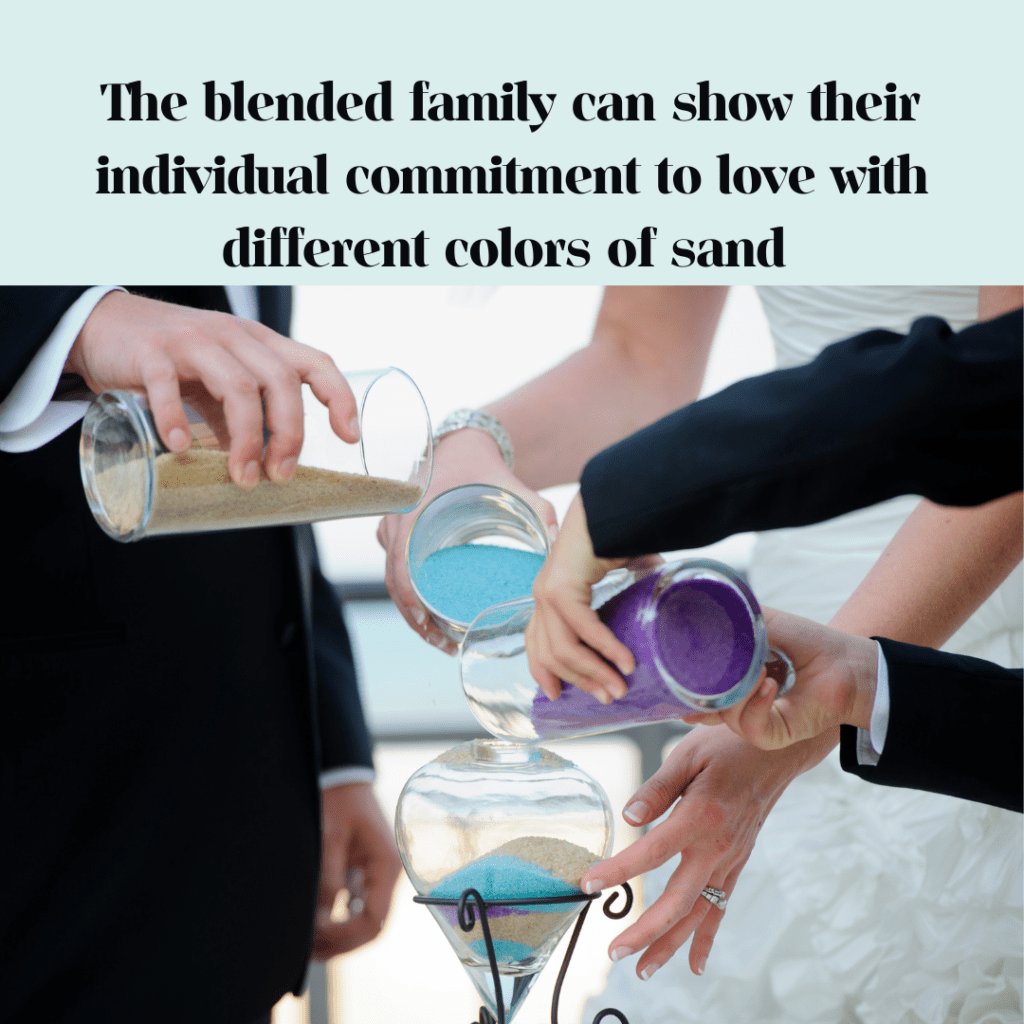
Hand Fastening Ceremony – Hand Fastening Ceremony is a Celtic tradition where the couple’s hands are bound with ribbons or cords of different colors that are symbolic in meaning; red represents love and passion, purple represents respect and honor, blue for truth and honesty, white for purity and cleanliness, green for work and prosperity, and yellow for sunshine and joy. These colorful ribbons or cords are wrapped around their clasp hands symbolizing their commitment to each other to invest these attributes into their marriage to make that bond of unity.
The Lasso Ceremony – The lasso ceremony is a Mexican/Filipino tradition where a pretty white floral garland, rosary, or beaded rope is carried up the isle during a wedding by a bridesmaid. During the ceremony after the vows are said, it is draped around the couples’ shoulders in a figure-eight shape symbolizing their never ending love and everlasting bond and commitment to each other. This unending tie of one cord symbolizes the marriage promise to never part. The lasso reminds the couple that their love is strong and supported by faith, family, and tradition. Typically, the lasso is performed by “padrinos” (godparents), often a respected couple who serve as the couple’s mentors. The couple remains connected in this symbolic embrace as prayers and blessings are spoken over them.
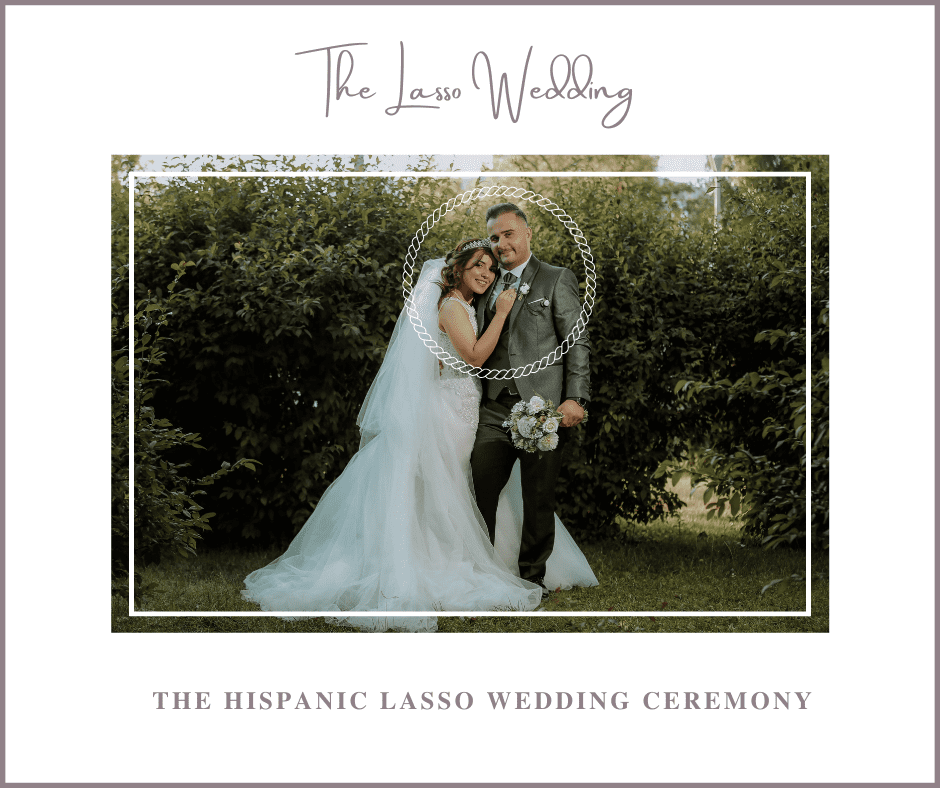
The officiant’s Blessing or Prayer: “This lasso is a symbol of your eternal love and commitment to your marriage. Just as this lasso binds you together today, may your love be unbreakable and grow stronger as the years go by. May you always walk in unity with faith, patience, and kindness toward each other. May God’s guiding hand keep you together.”
After the prayer and the blessing, the lasso is gently removed, symbolizing that the couple is now spiritually and emotionally bound together forever. The fresh flower lassos give a natural and romantic feel. The crystal or pearl lassos are decorative very elegantly and are often passed down as a family heirloom, used several times, and kept as a cherished keepsake in a special box through generations.
The Lei Ceremony – The Lei Ceremony is the giving and receiving of a lei symbolizing the open-hearted love and deep respect between the couple giving their commitment to the unity of their marriage. – Just as each flower in the lei is woven together, so too are the lives of the two people giving a lei to each other as a sign of their lifelong commitment to their marriage. Traditionally, leis are believed to bring blessings and protection to the wearer. The officiant says: “As you wear these leis, may they remind you of the beauty of your love, the strength of your commitment, and the blessings that surround you. May your marriage be filled with aloha-love, peace, and joy.” Then the groom places a lei around the bride’s neck and gently kisses her on the cheek (or forehead). The bride then places a lei around the groom’s neck and does the same. Sometimes an additional lei is also presented to the parents as a sign of gratitude.
Some couples include a Hawaiian chant or prayer that is recited from the guests. A common one is: “E pili mau nā pua kealoha” (May love always bind you together).” A Maile Leis are just greenery with no flowers – Often worn by the groom, representing strength and respect. Plumeria or Orchid Leis – are full of blooms and are most popular for brides, symbolizing feminine beauty and grace. Ti Leaf Leis – are long and glossy leaves that are flexible. Ti leaf leis are often simple, sleek, and durable compared to delicate flower leis. Ti leis are said to bring protection and good luck to the couple.
🍷 The Wine Blending Ceremony – The wine blending is a beautiful tradition where each pour two different wines into one cup symbolizing the blending of two families and joining of two lives into one may be bold and strong, the other smooth and sweet—so too does Groom________ and Bride_________ contribute a different part to the family; as they pour these wines together, they symbolize the blending of their lives, their dreams, and their love into something new and beautiful.” Each partner pours their wine into one cup, then they take turns to drink it. The mixed wine represents the new life they are creating together, one that cannot be separated, symbolizing the blending of their hearts and futures.
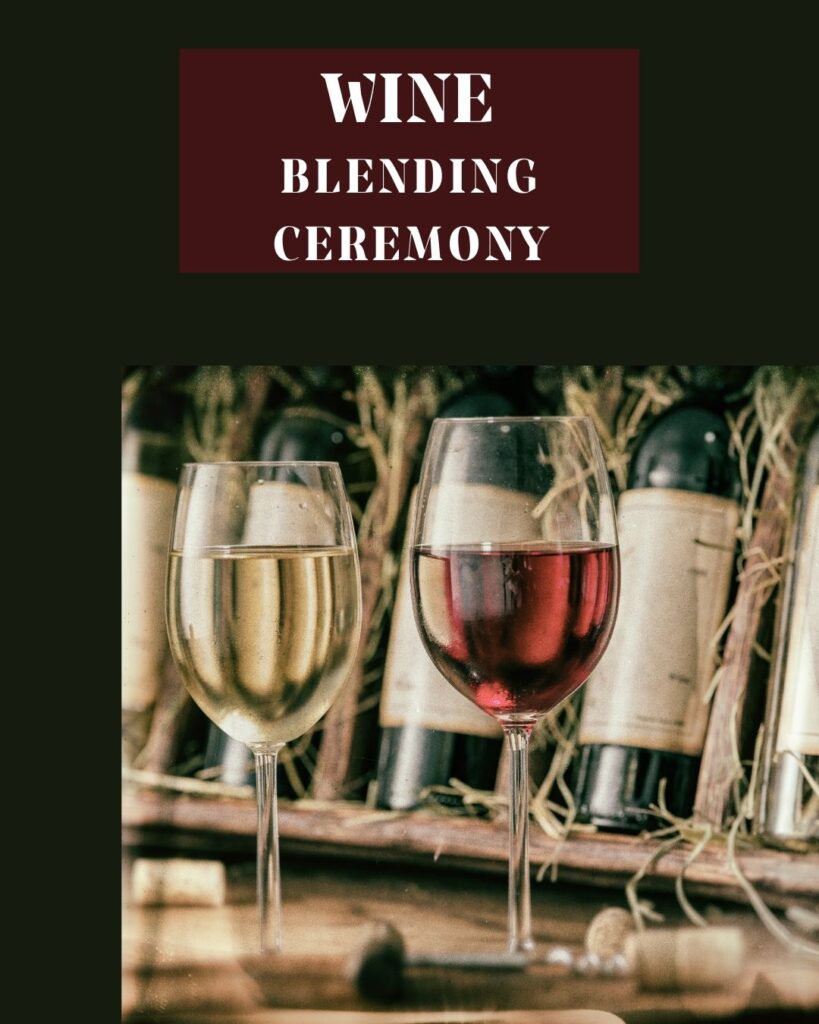
Jumping the Broom – 🎶 Jumping the Broom: Jumping the Broom is a tradition from African American and some Celtic cultures, symbolizing a fresh start together. The couple jumps over a broom laid on the ground, representing their leap into a new life, sweeping away their past to begin anew. Brooms were used in wedding rituals to sweep away evil spirits and bring blessings to the couple. In some cultures, jumping together over a broom symbolizes the creation of a new household. Some historians trace jumping the broom to West African tribal traditions, but it has been used in various Celtic and Romani wedding cultures also. During American slavery, enslaved couples were often not legally allowed to marry. As a result, they developed their own meaningful wedding traditions. Jumping the broom became a symbol of commitment and an act of defiance, affirming their love even without legal recognition to seal the union.
________________________________________
🎨Paint Pouring Ceremony – Paint Pouring is a rich tradition that becomes a piece of art in the couple’s new home. The couple splashes and brushes paint colors on a canvas to create a unique creation. Their love, talent, and emotions are represented in that piece of art. During the Paint Pouring ritual, couples reflect on their different approaches and contributions to the marriage unity. This act symbolizes their individual personalities coming together to create something beautiful and new. The artwork serves as a lasting reminder of their union and creativity. Another idea is to have a live artist do your marriage ceremony painting live during the ceremony. Kristyhollanddesigns.com
The Cord of Three Strands Ceremony – The Cord of Three Strands Ceremony, also known as the God’s Knot Ceremony, is based on Ecclesiastes 4:12: “’Though one may be overpowered, two can defend themselves, but a cord of three strands is not easily broken.” This ritual involves braiding three strands together, each representing a different element of the marriage: One strand for the husband, symbolizing his role in the marriage. One strand for the wife, symbolizing her role in the marriage. One strand for God, symbolizing the foundation of their union. By braiding the strands together, the couple symbolizes their commitment to each other with God at the center of their marriage. The strands are typically in gold (God), purple (husband), and white (wife), though couples can personalize the colors. During the ceremony the groom says these vows while braiding: “This strand represents my commitment to you, my love, and my promise to our marriage vows to become one. Bride says: “This strand represents my commitment to you, my love, and my devotion to walking this journey with you as one person. The officiant says: “And this strand represents God, who will be the foundation of your marriage. With Him at the center, your love will be strong, enduring, and unbreakable.”
My husband officiated in a beautiful wedding that used this idea. After they finished the braid he said, “May this braid remind you both in the years to come that with faith, love, and God, your marriage will stand firm against all challenges.” By braiding the strands together, the couple symbolizes their commitment to each other with God at the center of their marriage. Once finished, the braid is tied off and kept as a keepsake in their home to remind them of their vows.
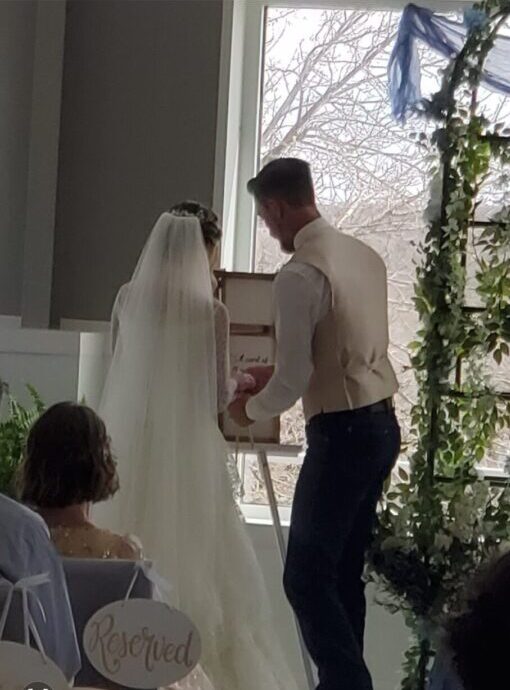
The Unity Cross Ceremony – The unity cross is a powerful Christian wedding tradition symbolizing the couple’s union with God at the center of their marriage. The Unity Cross consists of three pieces: The outer cross is a bold sturdy frame which represents the husband, symbolizing his role as the leader, provider, and protector of the family. The inner cross is delicate, light in color with an intricate design and represents the wife, symbolizing her beauty, grace, and supportive role. The securing pegs or wooden nails represent God, who binds the marriage together and keeps the union dependent on God to provide strength and a firm grip on the foundation of the Word of God and the grace of Jesus Christ. The groom places the bold outer cross into the frame, symbolizing his leadership and responsibility in the marriage. Secondly, the bride places the inner cross inside the frame, fitting perfectly within the husband’s cross, symbolizing how they complement each other. Together, they secure the cross with pegs or nails, representing their faith in God as the foundation of their home. One of our best friend’s son in Tulsa, OK used this idea and it was so beautiful.
The officiant may say, “Marriage is the union of two lives into one, a covenant made before God. Just as this cross comes together in three parts, so does your marriage. When joined together, these pieces form a complete, unbreakable symbol of your union, love, and faith. May this cross be displayed in your home as a lasting symbol of your marriage and a reminder of your commitment to each other and to God. With Him at the center, your marriage will be strong, unshaken, and full of grace. What God has joined together, let not anyone separate.”
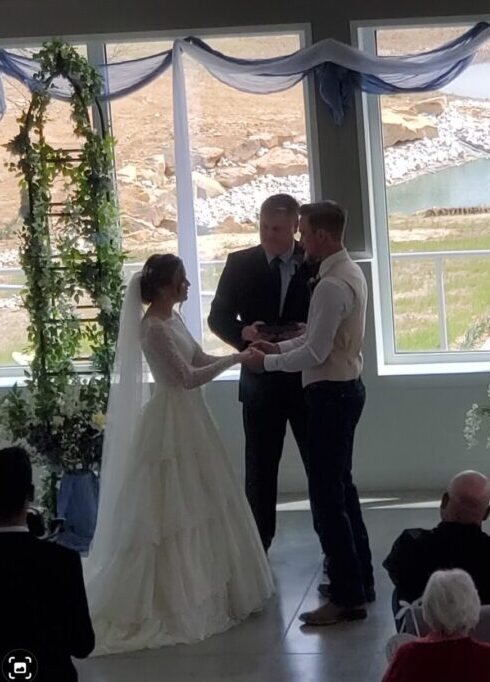
The Foot-Washing Ceremony – The foot-washing is Based on John 13:14-17 – “Now that I, your Lord and Teacher, have washed your feet, you also should wash one another’s feet.” After the vows are said, The minister says: “Marriage is a call to serve one another in love. Just as Jesus humbled Himself to wash His disciples’ feet, today Groom ______________ and Bride ______________ will wash each other’s feet as a symbol of their commitment to love, honor, and serve each other in humility and grace. May this act remind you that love is not about being first but about putting each other first. May you serve one another joyfully, forgive quickly, and love unconditionally as Christ has loved us.”
The couple walks to a chair and the bride sits down and the groom takes off her shoes and washes her feet in water and dries them with a towel and helps her put her shoes back on. Then the bride kneels in front of where the groom sits and together, they take off his shoes and she washes his feet in the same water and dries them with a towel. This ceremony of washing each other’s feet symbolizes humility, honor, love, and a servant-hearted attitude toward each other for the good of the marriage unity, and it represents Christ’s example of selfless love and the couple’s commitment to serve one another. This is a powerful, emotional moment emphasizing Christ-like love in marriage. This has been popular among some of my very servant hearted friends in Tulsa.
The Unity Chalice – The Unity Chalice is a Communion Ceremony and is based on Matthew 26:26-28 – “This is my body… this is my blood, which is poured out for many for the forgiveness of sins.” The couple takes Holy Communion together to reflect on Christ’s sacrifice and invite Him into their marriage. The couple drinks from a single cup (a unity chalice) to symbolize their shared life in Christ. The officiant may lead a prayer of blessing over the couple as they partake of the bread and the wine, saying: “Marriage is a covenant, a sacred promise before God. Just as Christ gave His life for us, today Groom ______ and Bride ________ take communion together as a symbol of their faith in Jesus and their commitment to a Christ-centered marriage. May you always remember to love one another as Christ has loved you—sacrificially, fully, and forever. May this covenant be unbreakable, just as God’s love for you is eternal.”
________________________________________
📖 The Bible Presentation Ceremony – The Bible Presentation Ceremony is based on Psalm 119:105 – “Your word is a lamp to my feet and a light to my path”. “God’s Word is the foundation of a strong marriage. Today, Groom_________ and Bride ________ present this Bible to one another, signifying their desire to seek wisdom, strength, and guidance from the Lord in their journey together.” The couple exchanges a family Bible, writing their wedding date inside. Officiant’s Blessing: “May this Bible be a source of encouragement and direction. As you read and pray together, may your marriage be strengthened in faith, love, and unity with Christ at the center.”
________________________________________
🧂 The Salt Covenant Ceremony – The Salt ceremonies began during biblical times when salt was used in covenants and trades. Because of its preservation properties it represents permanence and preservation. This ceremony is based on Matthew 5:13 – “You are the salt of the earth.” and Mark 9:50 – “Have salt among yourselves and be at peace with each other.” The bride and the groom take a small vial of salt and pour it into a shared container at the same time, mixing their grains together that can never be separated or distinguished apart again. Just as the two salt pours cannot be separated once poured, this act represents an unbreakable covenant. The officiant’s Reading: “In biblical times, salt was a sign of a binding, eternal covenant. Today, Groom_____________and Bride ____________ pour their individual grains of salt into one vessel, symbolizing their inseparable bond. Just as these grains can never be separated, so too will their lives be forever joined as one.” As the couple pours salt into a single container. The minister says, “May your love be steadfast and pure. May you always preserve and protect one another because that will bring peace, joy, and strength into your marriage.”
🕊 The Anointing Ceremony – The anointing ceremony is based on James 5:16 – “Pray for each other so that you may be healed. The prayer of a righteous person is powerful and effective.” The couple (or officiant) anoints each other’s hands or foreheads with oil while praying over their marriage. This represents the Holy Spirit’s blessing and guidance in their life together. Some couples use frankincense or myrrh oil, connecting the act to biblical traditions. “Throughout Scripture, anointing with oil has been a sign of blessing, protection, and the Holy Spirit’s presence. The minister may say, “Today, Groom____________ and Bride_________ will anoint each other as a symbol of their commitment to seek God’s guidance and blessings in their marriage.” The couple anoints each other’s forehead or hands with oil, while praying together as the officiant says, “May the Lord bless you and keep you. May His presence shine upon your marriage, filling it with love, wisdom, and grace. May you walk in unity, trusting in His plan for your lives together.” This is used more often among the Rhema Bible College students in Broken Arrow, Oklahoma. www.rbtc.org.
Song or Dance Ritual – Some couples choose to write a song or perform a dance to symbolize their unity. This personalized ritual allows them to express their love and commitment in a creative, unusual, and intimate way. It often becomes the most cherished memory and a highlight of their wedding day because it was so unique to them.
I hope you have enjoyed reading this blog. The unity ceremony is a deeply meaningful part of any wedding especially at Bella Rosa Venue in Tulsa, Oklahoma, symbolizing the merging of two lives into one. Whether through traditional rituals like the Unity Candle and the Cord of Three Strands Ceremony, or personalized entire family sand pouring or acts like Paint Pouring or even a Love Letter Box, these moments provide a powerful representation of the couple’s commitment to each other. They will serve as a reminder of the sacred vows exchanged and the enduring love that will guide them through their journey together.
Thanks so much for stopping by our blog! We hope you found this information helpful. We’re passionate about using our blog to shine a light on locally owned wedding venues. These venues often bring a higher level of expertise, service, and dedication to your big day. Plus, with less staff turnover than corporate or investor-owned venues, they’re able to provide a more personal touch. As you plan your wedding, we’d love for you to consider a locally owned venue like ours! Check out this wedding venue map to discover amazing locally owned venues across the country. And a big shout out to all the incredible locally owned wedding venues out there! Sincerely Yours, Tricia Bell
- Green Clover Farm, Green Clover Farm Blog
- The Venue at Murphy Lane, The Venue at Murphy Lane Blog,
- Talula Mesa, Talula Mesa Blog,
- Oaks of Devonaire, Oaks of Devonaire Blog,
- Bluestone Estate, Bluestone Estate Blog,
- Eden Farms Weddings, Eden Farms Weddings Blog,
- El Tango Reception Hall, El Tango Receptions Hall Blog,
- Dream Ranch Events, Dream Ranch Events Blog,
- Livingstone Event Space, Livingstone Event Space Blog,


